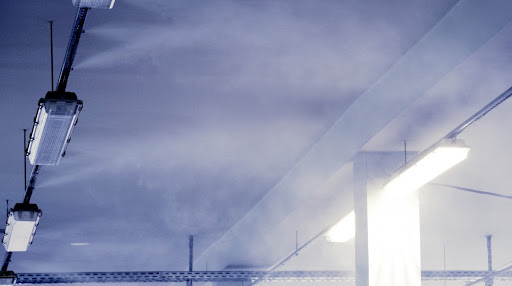
When it comes to humidity, most of us tend to think of those sticky summer days when the air feels oppressive. But when winter hits, we often experience the opposite problem: the air becomes extremely dry. That can be just as uncomfortable as air that’s too humid.
Facility humidity can often become a problem during winter, especially since heating equipment tends to sap even more moisture from the surrounding air. That’s why it’s important to consider adding humidifiers into your facility’s winter climate control plan.
The Problem of Facility Dryness
For indoor spaces, the ideal humidity is somewhere between 30% and 50%. Air conditioning removes much of the humidity during the summer, preventing problems like mold and mildew growth. But many facility climate control systems aren’t designed to add moisture back into the air. As a result, facility humidity can quickly fall below 30%.
The impact of excessive facility dryness usually starts with a feeling of discomfort. The dry air can cause dry skin, chapped lips, cracked and broken skin around your joints, and even eye irritation. It can also cause hair damage and increase the amount of static electricity, leaving people - and equipment - at a greater risk of shocks.
The respiratory system can also be negatively impacted by humidity issues during winter. The dry air can irritate the mucous membranes in noses and throats. This membrane protects our respiratory systems by trapping and eliminating bacteria. However, it becomes less effective when it dries out, giving bacteria an opening to cause infection.
Low facility humidity can make many workers feel uncomfortable, whether they become sick or not. Coughing, sneezing, and other symptoms can make employees miserable, lowering productivity. Even worse, sensitive individuals like asthma sufferers are more likely to experience problems due to poor climate control, especially because heaters spread more dust and other allergens.
Related: Why IAQ Is Important When Returning to Work
Improve Worker Health with Humidifiers
The first step to addressing facility dryness is testing the air with a hygrometer. This instrument will tell you the relative humidity in your facility. If the results are below 35%, you should consider fixing your facility humidity by adding humidifiers.
When adding humidifiers to your climate control plan, you generally have two options. You can purchase several smaller humidifiers to place throughout your facility, or you can install an industrial humidifier into your HVAC system.
Smaller humidifiers offer you greater control. If you’re experiencing problems in only some areas, you can put a humidifier in only those rooms. That will save you the expense of a larger installation. However, this solution is limited by two important factors. First, you need to purchase several units when going with smaller humidifiers. Second, it can become highly inefficient to power and maintain several separate units.
If you’re looking to solve your winter humidity problems with one piece of equipment, the industrial humidifier is the most suitable option. These units combat facility dryness by adding moisture into the air as it passes through your ducts. That has the benefit of making humidification a part of your overall climate control system.
Once you address your winter facility humidity, your workers should notice an immediate difference. Whereas facility dryness can make life miserable, a well-controlled habitat can be quite comfortable all year long. With adequate maintenance, you’ll notice that keeping your winter facility humidity at the right level will make a big difference for everyone.
If you have more questions about how you could benefit from a humidifier this winter, contact Tate today, and we’ll make sure your facility stays comfortable.
